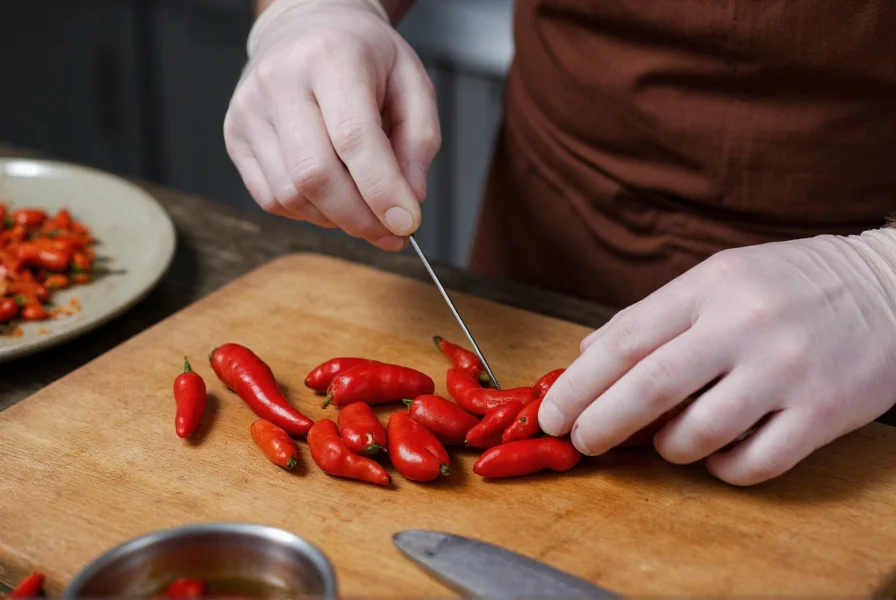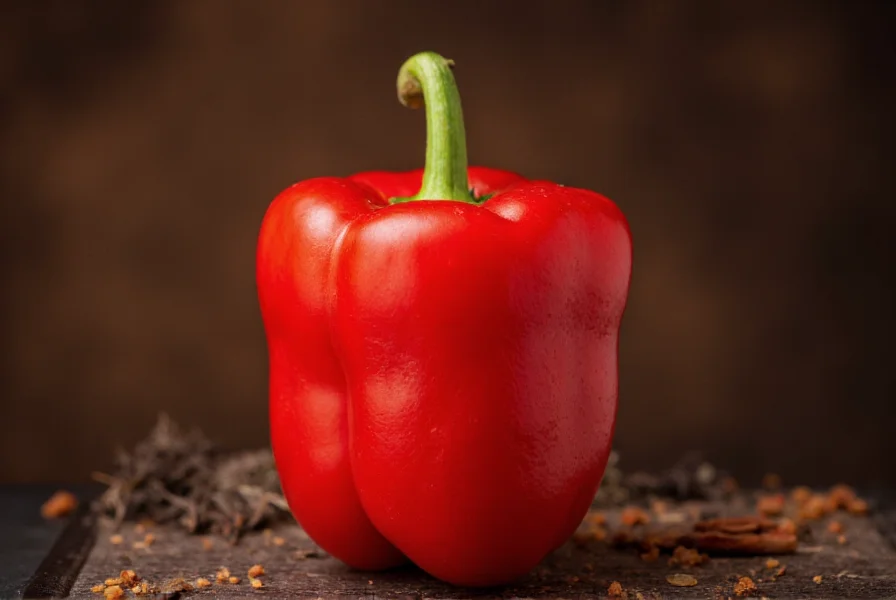The Armageddon pepper represents one of the hottest chili varieties available to enthusiasts and growers today. Developed through careful selective breeding, this pepper offers more than just extreme heat—it provides a complex flavor profile that distinguishes it from other superhots. Understanding its characteristics, proper handling techniques, and culinary applications is essential for anyone interested in exploring this fiery cultivar.
Understanding Armageddon Pepper Heat Levels
When discussing the armageddon pepper scoville rating, we're looking at serious heat territory. The Armageddon consistently measures between 1.5 and 2 million Scoville Heat Units (SHU), placing it firmly among the world's hottest peppers. To put this in perspective, it's approximately 300 times hotter than a jalapeño and delivers about 75% of the heat found in the current hottest pepper record holder.
| Pepper Variety | Scoville Heat Units | Heat Comparison |
|---|---|---|
| Armageddon Pepper | 1,500,000-2,000,000 SHU | Reference point |
| Carolina Reaper | 1,400,000-2,200,000 SHU | Slightly hotter on average |
| Trinidad Moruga Scorpion | 1,200,000-2,000,000 SHU | Comparable heat range |
| Habanero | 100,000-350,000 SHU | 5-15 times milder |
| Jalapeño | 2,500-8,000 SHU | Approximately 300x milder |
When considering armageddon pepper vs carolina reaper, the differences become nuanced. While the Carolina Reaper holds the official Guinness World Record, the Armageddon offers more consistent heat levels across multiple plants. Many growers report that the Armageddon delivers a cleaner, more immediate heat sensation compared to the Reaper's sometimes delayed but longer-lasting burn.
Origin and Development History
Bred in the United Kingdom by chili enthusiast David Price, the Armageddon pepper emerged from selective breeding of the Naga Morich and other superhot varieties. Unlike many superhots developed in controlled laboratory settings, this cultivar was created through traditional cross-pollination techniques over multiple growing seasons.
The name "Armageddon" reflects both the pepper's extreme heat and its dramatic visual appearance. When Price first introduced the variety to the UK chili community around 2010, it quickly gained attention for its reliable heat levels and distinctive wrinkled pods. Understanding the armageddon pepper characteristics requires examining both its genetic heritage and the growing conditions that maximize its potential.

Physical Characteristics and Growth Requirements
The Armageddon pepper plant typically reaches 3-4 feet in height with proper care. Its pods measure 2-3 inches long and 1-1.5 inches wide, featuring the characteristic bumpy, wrinkled texture common to many Naga-type peppers. The pods mature from green to a vibrant red, though some variants may display chocolate or yellow coloring.
For those interested in growing armageddon peppers, these plants require specific conditions:
- Long growing season (90-120 days to maturity)
- Consistent temperatures between 70-90°F (21-32°C)
- Well-draining soil with pH between 6.0-7.0
- Regular watering without waterlogging
- Full sun exposure for at least 6-8 hours daily
Unlike some superhot varieties that are notoriously difficult to grow, the Armageddon demonstrates relatively good disease resistance and consistent fruit set when provided with proper care. Gardeners report that the plants produce abundant yields when grown in containers or directly in garden beds.
Culinary Applications and Safety Considerations
When exploring armageddon pepper culinary uses, extreme caution is necessary. This isn't a pepper for casual cooking—it requires careful handling and precise measurement. Many experienced chili chefs recommend using specialized equipment like gloves, eye protection, and dedicated utensils when working with Armageddon peppers.
The heat from this pepper builds rapidly and intensely, with initial fruity notes quickly giving way to searing heat. Unlike some superhots that deliver a primarily upfront burn, the Armageddon features a complex heat profile that evolves over time. Culinary applications typically include:
- Small quantities in hot sauces (1-2 drops per bottle)
- Infused oils for controlled heat delivery
- Specialty dishes where extreme heat is the primary feature
- Processed into powder for precise measurement

Understanding proper armageddon pepper safety precautions is critical. Always wear nitrile gloves when handling, avoid touching your face, and work in well-ventilated areas. The capsaicin oils can become airborne during cutting, causing respiratory irritation. If you experience skin contact, use milk or specialized pepper sprays rather than water to neutralize the burn.
Where to Find Armageddon Pepper Products
For those seeking armageddon pepper seeds or finished products, several specialty retailers offer this cultivar. Unlike some record-breaking peppers that remain largely experimental, the Armageddon has gained commercial availability through:
- Specialty seed companies focusing on superhot varieties
- Online marketplaces with verified chili seed sellers
- Limited commercial hot sauce products featuring the pepper
- Chili enthusiast communities and exchanges
When purchasing seeds, look for reputable sellers who can verify the pepper's lineage and heat consistency. Many growers report that the Armageddon maintains more consistent heat levels across multiple plants compared to some other superhot varieties, making it a reliable choice for those seeking extreme heat without the unpredictability of experimental hybrids.
Comparing Superhot Pepper Options
For chili enthusiasts evaluating different options, understanding how the Armageddon compares to similar varieties is essential. While the armageddon pepper heat level sits just below the Carolina Reaper's peak measurements, it offers several advantages:
- More consistent heat across multiple pods and plants
- Relatively easier growing conditions compared to some superhots
- Distinctive flavor profile with initial fruitiness before intense heat
- Good yield potential for a superhot variety
- Wrinkled texture that helps identify authentic specimens
When considering armageddon pepper comparison with other superhots, remember that personal heat tolerance varies significantly. What feels manageable to one person might be overwhelming to another. Always start with minuscule amounts when experimenting with this pepper in culinary applications.
Frequently Asked Questions
How hot is the Armageddon pepper compared to a habanero?
The Armageddon pepper measures between 1,500,000-2,000,000 Scoville Heat Units, making it approximately 5-15 times hotter than a habanero, which ranges from 100,000-350,000 SHU.
Can you grow Armageddon peppers in containers?
Yes, Armageddon peppers grow well in containers of at least 5 gallons with proper drainage. Container growing allows better temperature control, which is beneficial for this heat-loving plant that requires consistent warm conditions.
What's the best way to handle Armageddon peppers safely?
Always wear nitrile gloves, eye protection, and work in a well-ventilated area when handling Armageddon peppers. Avoid touching your face, and use dedicated cutting boards and utensils. If capsaicin contacts skin, use milk or specialized pepper sprays rather than water to neutralize the burn.
How long does it take for Armageddon peppers to mature?
Armageddon peppers typically require 90-120 days to reach full maturity from transplanting. The pods start green and gradually ripen to vibrant red over several weeks. Patience is required as superhot peppers generally take longer to mature than milder varieties.
Does the Armageddon pepper have any flavor beyond just heat?
Yes, the Armageddon pepper offers a complex flavor profile with initial fruity, slightly sweet notes before the intense heat develops. Many describe it as having tropical fruit undertones that distinguish it from other superhots that may deliver pure heat with minimal flavor complexity.











 浙公网安备
33010002000092号
浙公网安备
33010002000092号 浙B2-20120091-4
浙B2-20120091-4